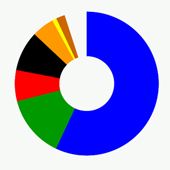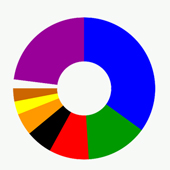Well, what can I say about this course as a final reflection?
I decided to go through all of my blog posts to get an idea of what we were discussing each week. It’s funny, I have had a blog for years and really never bothered to write anything worth reading, actually most of the stuff I posted on my blog probably never got read by anyone. Including myself! So, as I started this course I remember thinking to myself:
“why not take this opportunity to make your blog worth reading?”
I enjoyed the blogging aspect of this course more so than the other courses this semester for one simple reason: The ability to share my posts and to get feedback from my peers in the social media channels. At first I was a little bit shy. I wasn’t sure if the other students would even bother to take the time to read what I was writing. Actually, I thought I might come off as a bit of a keener for posting my school work on my social media accounts! I was thrilled when I started receiving comments and approval notifications from the other students! I think I even got a few likes from people who weren’t even in the class!
This support encouraged me to continue adding to my blog and sharing my posts through the various social networks. As a result of the increased exposure I started getting connection requests! That was another moment of realization for me. My posts were getting me positive exposure which was leading to new networking opportunities. Through the social media channels we were using I immediately started to send out connection invites of my own. I tried to connect with as many classmates as I could. Using the strategies and language that we were learning in this course I successfully expanded my LinkedIn, YouTube, Facebook and Twitter accounts. My LinkedIn account especially!
Overall, I would say that one of them best aspects of this course was that it effectively gave me the insight and knowledge necessary to successfully promote myself and my work through social media channels.
Aside from the blogging, I also enjoyed the class discussions. I thought the classes regarding the importance of maintaining a professional identity online were helpful. The subject matter addressing the types of interference that can obscure messages when communicating through technology was especially interesting. These classes really contributed to my understanding and raised my awareness of the potential pitfalls that one might encounter when using digital communications . There were some very useful insights that came out of those discussions. I actually spent sometime after one of those classes familiarizing myself with Facebook privacy policy which lead to me deleting a few pictures off of my account! Being mindful of how you write, what you say and the longevity of what you post online was also useful information.
There were a few things about the course I probably could have done better. I didn’t seem to make a very big impact on Twitter. For the sake of my grade, I attempted to login every few days to see what was going on but admittedly I was not as active there as on the other networks. I really can’t explain why. I don’t mind Twitter I just don’t find it as interesting as LinkedIn or Facebook. I think it’s due to the way the information is organized. The twitter home screen just seems so chaotic. More so than any of the other networks. Once you have filtered the results by hashtag it’s not as bad but I personally prefer the group pages on Facebook and LinkedIn or the conversation feature on YouTube.
I appreciated the mandatory participation on each network. Had we been given the option of choosing which network we wanted to use I probably wouldn’t have ever logged into Twitter. So despite the fact that Twitter is not my favorite social media channel I did still have the opportunity to make a few new connections and learn a few different things about the interface and the functionality.
Aside from the tutorial sessions, I also enjoyed participating in the YouTube discussions after watching the weekly videos. Nadia’s strategy of insisting that we post comments made watching the videos more interesting. Especially if you wanted to contribute something meaningful to the conversation!
There really weren’t any limitations or constraints that I felt I had to work with. There was ample opportunity to learn new skills for those who wanted to participate. The content was always accessible and well organized. Nadia was readily available through email or one of the social media networks to respond to questions.
I’d like to end my final blog post by discussing the group work. I ended up in an amazing group for the PBL assignment. I really enjoyed participating in our weekly meetings and watching our PBL project develop. We started with a shared Google document that eventually evolved into several online resources including how-to videos, a functional website, a blog, a Prezi and several social media channels for a moustached cartoon character! There’s not a single negative thing I could say about my group for this class. Everybody actively participated in the group meetings and contributed meaningful and insightful additions to the project. What we were able to achieve through our digital communications with one another was quite amazing. Our group is the proof that digital communications can successfully be utilized to achieve successful collaboration regardless of physical location.
Overall, I enjoyed this class very much! Thanks for reading!












